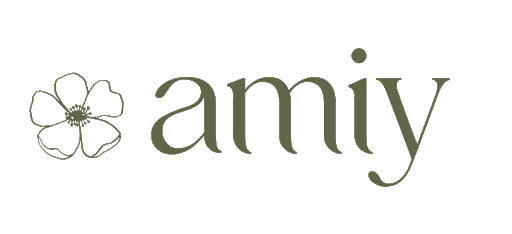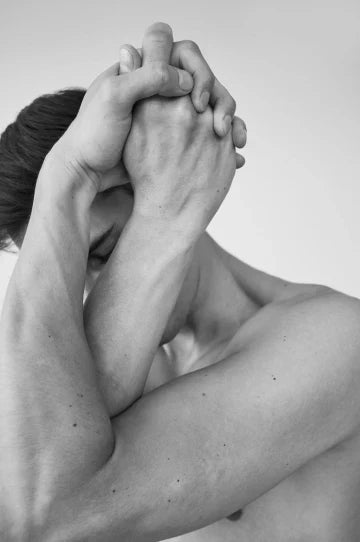




What are you looking for?

Best ayurvedic medicine for varicose veins—safe herbs, oils and tips that may ease pain, swelling and heaviness. Simple home care plus doctor advice.
Heavy legs after a long day? Visible, twisted veins that ache or throb by evening? Many people look for the best ayurvedic medicine for varicose veins because they want gentle care that fits daily life. This guide keeps it simple—what Ayurveda says, which herbs and oils may help, and safe habits you can start today.
This content is for education only and is not a substitute for professional medical advice. Please consult a qualified healthcare provider for personal care.

Varicose veins are enlarged, twisted surface veins, most often on the legs. They can feel heavy, itchy, or painful, especially after standing. Risk rises with long hours on your feet, pregnancy, higher body weight, and family history.
In Ayurveda, varicose veins are often compared to Siraja Granthi—a state where veins become dilated and tortuous. It usually involves Vata disturbance (movement, nerve tone) with Rakta involvement (blood). The aim is to calm Vata, improve micro-circulation, and support vein tone with herbs, oils, routines, and where needed, clinical procedures under guidance. AYUSH also frames Ayurveda as supportive for peripheral vascular issues to reduce symptoms and prevent skin complications. (ayushportal.nic.in)
There isn’t one single “best” pill for everyone. Your stage, symptoms, work pattern, and constitution matter. Still, these time-tested options are commonly used under an Ayurvedic doctor’s care:
Herbs can interact with medicines or conditions. Always take personalised advice.
Warm, gentle upward massage (ankle to knee) once daily may ease heaviness.
Use mild warmth only. Avoid deep pressure on bulging veins. Skip massage over open sores, eczema, or if your doctor has advised against it.

Some Ayurvedic centres use leech therapy and related methods in selected, complicated cases (e.g., stubborn swelling or skin changes). This must be doctor-supervised in a clinical setting with proper screening and hygiene. AYUSH documents position Ayurveda as supportive for peripheral vascular conditions; work with both systems where needed. (ayushportal.nic.in)
Small daily steps add up:
Our doctor-formulated blends prioritise Bio-Neuromodulation™ (balanced nerve signalling for comfort) and Complex Plant Elixir™ (synergistic botanicals for circulation and recovery). Pairing daily movement with thoughtful herb/oil routines is where most people feel steady relief.
Improve blood circulation naturally → Best Ayurvedic Medicine for Insomnia & Anxiety
Leg pain at night: ayurvedic tips → Best Ayurvedic Skin Care Products: Simple Picks for Clear, Calm Skin
A: There’s no single best for all. Common choices include gotu kola, guggulu, manjistha and local oils like Sahacharadi. A practitioner tailors dose, form and duration to your stage and symptoms. (PubMed)
A: Advanced, bulging veins rarely “go away,” but Ayurveda may reduce symptoms like heaviness, swelling and skin changes, and support daily comfort—ideally alongside medical guidance when needed. (ayushportal.nic.in)
A: Sahacharadi taila is a popular choice for gentle upward massage. Nirgundi-based oils help when soreness dominates. Avoid strong heat and deep pressure over bulging veins.
A: Many tolerate it well, but it isn’t for all. Use standardised extracts, short courses, and medical advice if you’re pregnant, have liver issues, or take regular medicines. (PubMed)
A: They’re often helpful for swelling and fatigue, especially for jobs with long standing. Get the right grade and fit from a clinician or pharmacy.
A: Sudden swelling, severe pain, a new wound or any bleeding from a vein needs prompt medical attention.
If your legs feel heavy or achy by evening, pair movement and elevation with gentle local care. For muscle and tissue comfort, explore Muscle Mercy—our recovery-focused blend designed to ease everyday strain so you can keep up with your routine.
Digestive balance also affects venous pressure. If bloating or constipation add to discomfort, consider Gut Reset to support regularity and lighter evenings. Use alongside your practitioner’s advice, stockings (if prescribed), and the habits above.
You can also search for: Ayurvedic Medicine For Acidity And Gas | Ayurvedic Medicine For Acidity Safe Gas Relief | Ayurvedic Medicine For Allergy Relief Simple Steps | Ayurvedic Medicine For Anxiety And Stress Calm The Mind Sleep Better | Ayurvedic Medicine For Cholesterol Natural Control Guide | Ayurvedic Medicine For Constipation | Ayurvedic Medicine For Constipation Simple Relief | Ayurvedic Medicine For Dry Cough Natural Relief By Amiy Naturals | Ayurvedic Medicine For Headache Gentle Lasting Relief | Ayurvedic Medicine For Hormonal Imbalance Women S Guide | Ayurvedic Medicine For Hormonal Imbalance Women S Guide 1 | Ayurvedic Medicine For Inflammation And Pain Natural Relief | Ayurvedic Medicine For Irregular Periods Gentle Relief Balance | Ayurvedic Medicine For Joint Muscle Pain Simple Relief | Ayurvedic Medicine For Knee Pain Natural Relief Guide | Ayurvedic Medicine For Nerve Pain Natural Relief Guide | Ayurvedic Medicine For Pimples Clear Skin Naturally | Ayurvedic Medicine For Sleep Gentle Ways To Rest | Ayurvedic Medicine For Stomach Pain Gentle Relief | Ayurvedic Medicine For Weight Gain Safe Natural Ways | Ayurvedic Medicine Joint Muscle Pain | Ayurvedic Medicine Simple Guide To Natural Healing | Ayurvedic Solution For Stress Anxiety Amiy Naturals | Ayurvedic Syrup For Irregular Periods Gentle Cycle Support | Best Ayurvedic Health Supplements Amiy Naturals Online | Best Ayurvedic Medicine For Acidity And Gas | Best Ayurvedic Medicine For Blood Circulation Amiy Muscle Mercy 1 | Best Ayurvedic Medicine For Body Pain And Weakness Natural Relief | Best Ayurvedic Medicine For Gastric Problem Simple Relief | Best Ayurvedic Medicine For Insomnia Anxiety Amiy Naturals | Best Ayurvedic Medicine For Insomnia Anxiety Amiy Naturals 1 | Best Ayurvedic Medicine For Insomnia Sleep Drops By Amiy | Best Ayurvedic Medicine For Memory And Concentration | Best Ayurvedic Medicine For Migraine Gentle Relief | Best Ayurvedic Medicine For Neurological | Best Ayurvedic Medicine For Painful Menstruation Amiy Naturals | Best Ayurvedic Medicine For Sinus Allergy Relief | Best Ayurvedic Medicine For Skin Diseases Amiy Naturals | Best Ayurvedic Medicine For Snoring Problems Natural Relief | Best Ayurvedic Medicine For Stamina Energy | Best Ayurvedic Medicine For Stomach Cleansing Drops | Best Ayurvedic Medicine For Stomach Problems | Best Ayurvedic Medicine For Women S Health Amiy Naturals Drops | Best Ayurvedic Medicine For Women S Health Amiy Naturals Drops 1 | Best Ayurvedic Oil For Muscle Pain Relief Safe Natural Support | Best Ayurvedic Products For Skin Herbal Medicine Onlin 1 | Best Ayurvedic Skin Care Products Clear Calm Glowing | Best Ayurvedic Skin Care Products Simple Picks For Clear Calm Skin | Best Ayurvedic Syrup For Glowing Clear Skin Amiy Naturals | Best Medicine For Nerve Pain In Neck Ayurvedic Guide | Buy Ashwagandha Ayurveda Drops Stress Relief Energy Boost | Buy Ayurvedic Blood Purifier Natural Herbal Drops For Healthy Blood | Buy Best Ayurvedic Medicine For Memory Concentration Amiy Naturals | Buy Best Ayurvedic Tonic For Glowing Skin Amiy Naturals | Top 10 Ayurvedic Herbs For Daily Use | Weight Loss Ayurvedic Medicine Safe Options For Women